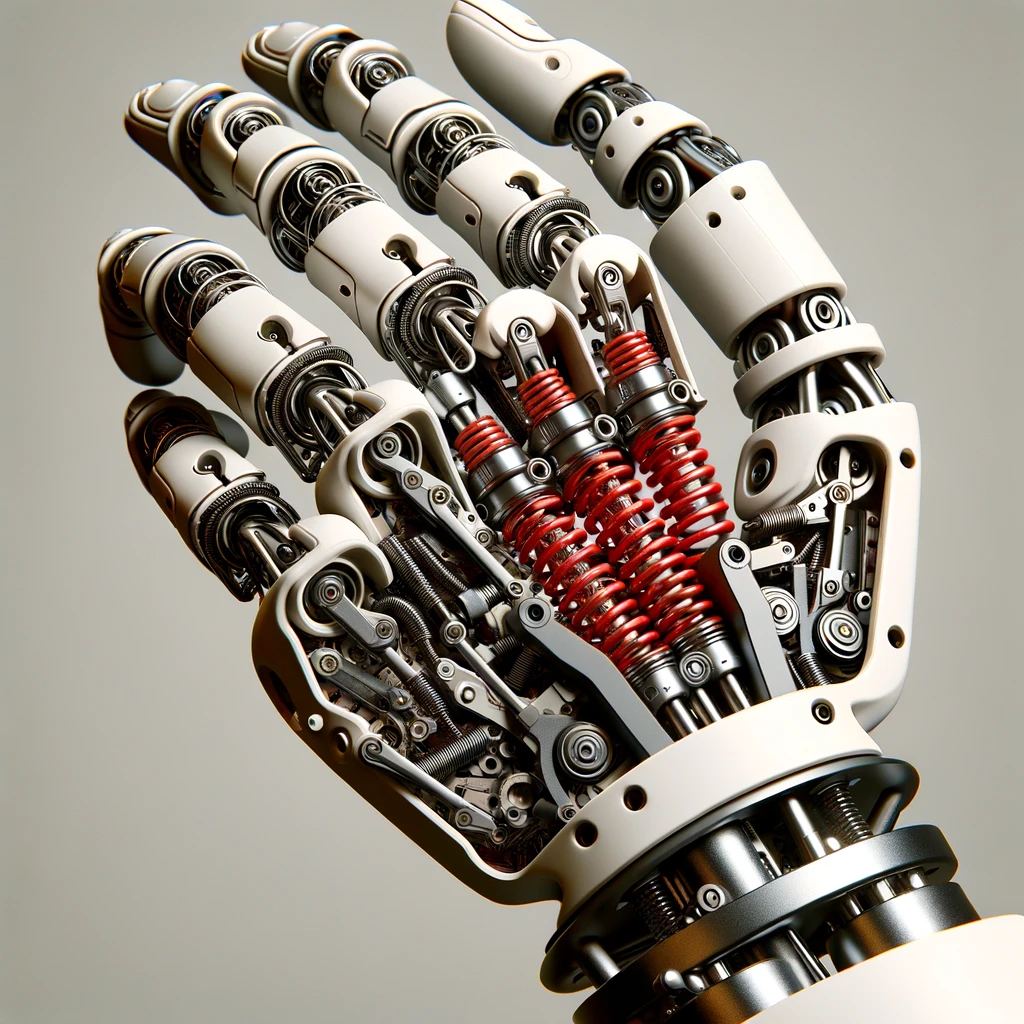The Evolution of Compression Springs in Robotics: Past, Present, and Future
The Evolution of Compression Springs in Robotics: Past, Present, and Future


Introduction
The intersection of robotics and mechanical engineering has yielded significant advancements in automation and technology, with compression springs emerging as unsung heroes in this narrative. These springs, essential for providing force and motion control, have adapted over time to meet the increasingly sophisticated demands of robotic applications. This evolution reflects broader trends in robotics, from the first mechanized arms to today's precision surgical robots. The journey of compression springs in robotics mirrors the field's overall progression toward more complex, capable, and adaptive technologies. Highlighting the importance of design tools, this article explores how innovations like Acxess Spring's 3D CAD software, 3D Blueprints, and Online Spring Force Tester are pivotal in crafting the next generation of robotic systems.
Context
The utilization of springs in machinery is not a novel concept, with their application stretching back to pre-industrial times. However, their integration into robotics marked a significant milestone in the automation era. Initially, springs were employed for basic functions, leveraging their inherent properties to facilitate motion and force in early robotic systems. As the industrial landscape evolved, so too did the demands on these mechanical components, driving advancements in material science and spring engineering design. The evolution from basic spring designs to those made with modern spring design software like Spring Creator 5.0 have been critical in transitioning from the rudimentary robots of the past to the highly specialized automatons of today.
Present Applications and Case Studies
In the realm of industrial robotics, compression, extension and torsion springs are indispensable for ensuring the precise operation of machinery. Modern manufacturing lines, especially in the automotive sector, rely on robotic arms equipped with springs designed for high durability and exacting precision. For instance, in automotive assembly, robots equipped with custom-engineered springs perform tasks requiring meticulous force control, demonstrating the springs' critical role in modern manufacturing efficiency. Similarly, in the medical field, robotic-assisted surgery has become increasingly prevalent, with precision being paramount. The use of finely tuned compression springs in surgical robots exemplifies how advanced spring design technology enhances the capabilities of these machines, allowing for procedures that surpass the limitations of human dexterity.
Design Challenges
Designing compression, extension or torsion springs for robotic applications presents a unique set of challenges, as engineers must navigate a complex landscape of technical requirements. These challenges include crafting custom springs that meet specific force output and flexibility demands within the spatial limitations of robotic systems. Moreover, the push toward miniaturization and the need for springs to maintain their integrity under continuous, repetitive use exacerbate these design challenges. The evolution of materials and manufacturing techniques has been instrumental in addressing these issues, with innovations providing the means to create springs that are both lightweight and capable of withstanding the rigors of robotic operation.
Technological Innovations and Tools
The advent of advanced design software has been a boon for engineers specializing in robotic components. Acxess Spring's 3D CAD software, for instance, allows for the meticulous design of springs, enabling precise adjustments to dimensions and force characteristics before the manufacturing process begins. This capability not only streamlines the development process but also opens up new possibilities for custom spring solutions. Spring Creator 5.0 offers trillions of spring designs at your fingertips. Furthermore, the ability to create detailed 3D blueprints and utilize online spring force testing tools means that prototypes can be evaluated and refined with unprecedented efficiency. This digital testing environment helps ensure that the final spring design is optimized for its specific application in the robotic system, reducing the time and cost associated with physical prototyping.
The Future of Compression Springs in Robotics
Looking forward, the field of robotics stands on the cusp of further transformation, with material science playing a key role in this evolution. The exploration of new alloys and composite materials promises to yield springs that are not only lighter and stronger but also more adaptable to the changing needs of robotics. Additionally, the potential integration of smart technology into compression springs—enabling them to adjust their properties dynamically—could revolutionize robotic systems. This adaptability would allow robots to perform more complex tasks with greater efficiency and precision, marking a significant leap forward in the capabilities of automated systems.


Conclusion
The evolution of compression, extension, and torsion springs within the field of robotics exemplifies the dynamic interplay between mechanical design and technological advancement. As robotics continue to advance, the demand for innovative spring solutions grows, driving further developments in design, materials, and manufacturing processes. The role of advanced design tools, such as those offered by Acxess Spring, cannot be overstated, as they empower engineers to push the boundaries of what is possible in robotic technology. As we look to the future, the continued innovation in compression spring design and application promises to play a pivotal role in shaping the next generation of robotic systems, making them more capable, flexible, and efficient.





